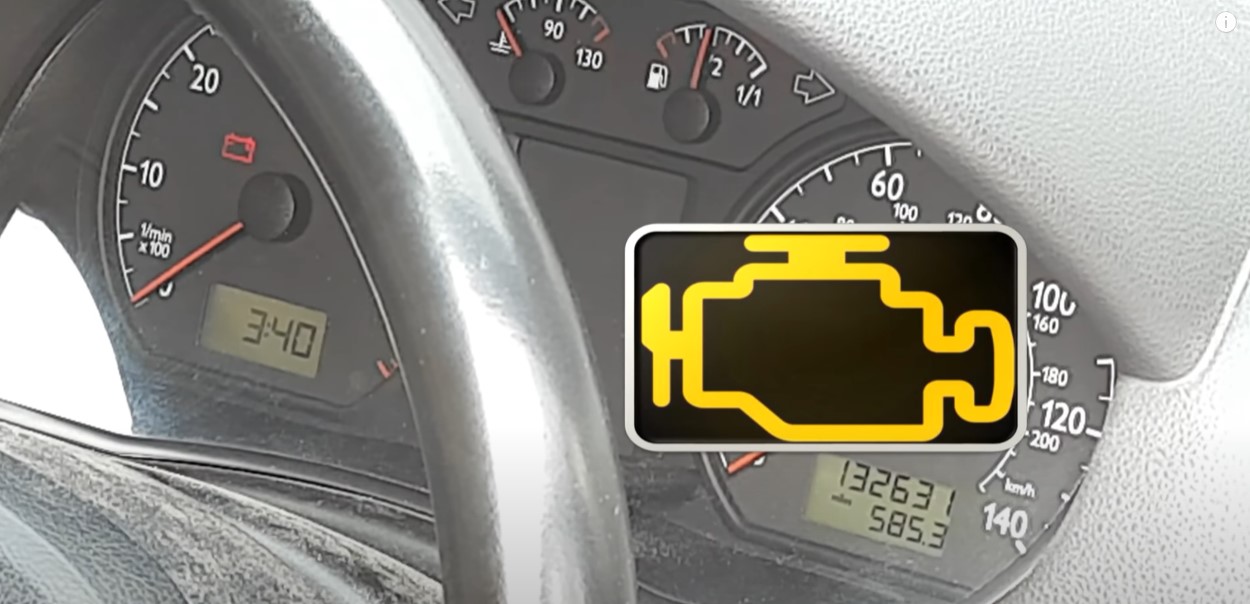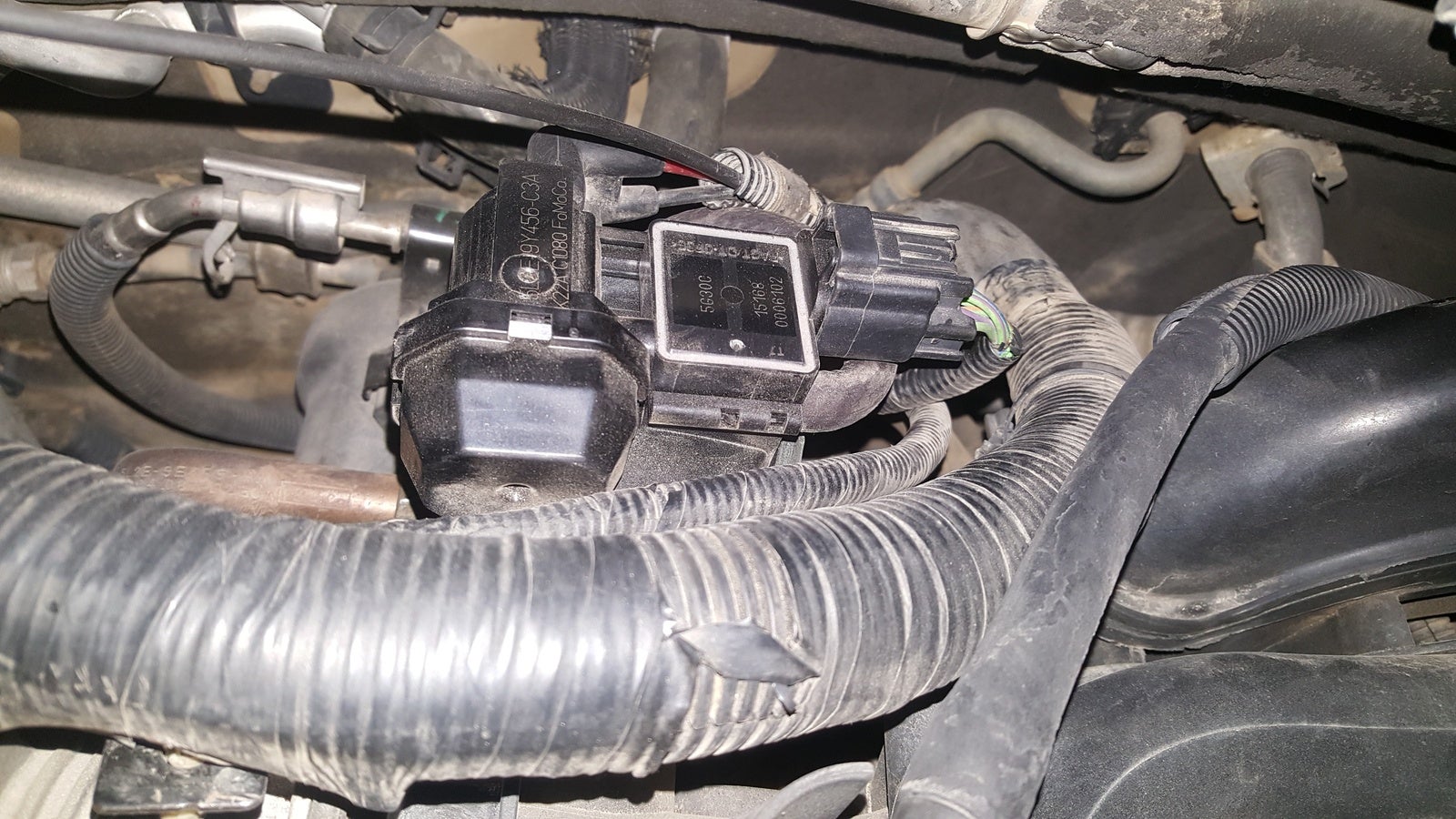P0106 Code: Troubleshooting the Manifold Absolute Pressure/BARO Sensor

The P0106 code is a diagnostic trouble code related to the manifold absolute pressure (MAP) or BARO sensor in a vehicle's engine management system. This code indicates an issue with the sensor's range or performance and can have an impact on engine performance and emissions. The purpose of this article is to provide a comprehensive guide on diagnosing and fixing the P0106 code to help vehicle owners resolve the issue effectively.
Understanding the P0106 Code
The P0106 code is triggered when the engine control module (ECM) detects that the manifold absolute pressure (MAP) or BARO sensor is providing readings that are outside the expected range or not performing properly. This code is essential in identifying and diagnosing issues with the sensor and can help prevent further damage to the vehicle's engine and emissions system. It is important to address the P0106 code promptly to avoid potential performance and efficiency problems.
The manifold absolute pressure (MAP) or BARO sensor plays a crucial role in the engine management system. It measures the atmospheric pressure or manifold pressure and sends this information to the ECM to calculate the air density. The ECM uses this data to determine the proper air-fuel mixture and regulates fuel delivery accordingly. The accurate functioning of the sensor is vital for optimal engine performance and emissions control.
Symptoms of the P0106 Code
Common Symptoms
When the P0106 code is present, drivers may experience several common symptoms that indicate an issue with the manifold absolute pressure (MAP) or BARO sensor. These symptoms may include:
- Rough idle
- Poor acceleration
- Excessive fuel consumption
It is important to note that the specific symptoms and their severity may vary depending on the vehicle make and model. However, if any of these symptoms are present, it is recommended to have the vehicle inspected and diagnosed for the P0106 code.
Less Common Symptoms
In addition to the common symptoms mentioned above, there are less common symptoms that may also indicate a problem with the manifold absolute pressure (MAP) or BARO sensor. These symptoms may include:
- Engine misfire
- Stalling
- Difficulty starting the vehicle
While these symptoms may not be as commonly associated with the P0106 code, they should not be ignored as they can still be indicative of a sensor issue.

Possible Causes of the P0106 Code
Sensor Range/Performance Issues
One possible cause of the P0106 code is an issue with the range or performance of the manifold absolute pressure (MAP) or BARO sensor. Several factors can contribute to these issues, including:
- Sensor contamination
- Wiring problems
- Sensor failure
It is important to thoroughly inspect and test the sensor to determine if it is functioning within the expected range and performance specifications.
Vacuum Leak
A vacuum leak can also trigger the P0106 code by affecting the sensor's readings. Potential sources of vacuum leaks include:
- Cracked hoses
- Faulty intake manifold gasket
Inspecting the vacuum system and addressing any leaks is crucial in resolving the P0106 code.
Intake Manifold Issues
Problems with the intake manifold, such as leaks or blockages, can impact the readings of the manifold absolute pressure (MAP) or BARO sensor, leading to the P0106 code. Inspecting the intake manifold for any issues and repairing or replacing it as necessary can help resolve the code.
Wiring and Electrical Problems
Wiring and electrical connections play a significant role in the proper functioning of the manifold absolute pressure (MAP) or BARO sensor. Shorts, open circuits, or loose connections can interfere with the sensor's performance and trigger the P0106 code. It is essential to check the wiring and repair or replace any faulty components to resolve the issue.
ECM Malfunction
A malfunctioning engine control module (ECM) can misinterpret sensor data and trigger the P0106 code. Before replacing the sensor, it is important to rule out any ECM malfunctions. Proper diagnosis and repair of the ECM, if necessary, can help resolve the issue effectively.
Diagnosing the P0106 Code
Diagnosing the P0106 code related to the manifold absolute pressure (MAP) or BARO sensor requires a systematic approach. Follow these steps to diagnose the issue:
- Start by using an OBD-II scanner to retrieve the trouble code and any additional codes that may be present.
- Inspect the manifold absolute pressure (MAP) or BARO sensor for any obvious signs of damage or contamination.
- Check the sensor's wiring and electrical connections for any issues, such as loose connections or damaged wires.
- Perform a vacuum test to check for any leaks in the vacuum system.
- Inspect the intake manifold for any leaks, blockages, or other issues.
- If all the above checks do not reveal any problems, further diagnose the ECM for potential malfunctions that may be causing the P0106 code.
Following these steps will help narrow down the cause of the P0106 code and guide you towards the appropriate troubleshooting and fixing methods.
Troubleshooting and Fixing the P0106 Code
Cleaning the MAP/BARO Sensor
If the manifold absolute pressure (MAP) or BARO sensor is contaminated, cleaning it can often resolve the P0106 code. Follow these steps to clean the sensor:
- Disconnect the sensor from the vehicle's wiring and remove it from the intake manifold.
- Inspect the sensor for any visible dirt, debris, or oil contamination.
- Using an appropriate cleaning solvent, gently clean the sensor using a soft cloth or brush. Avoid using harsh chemicals that may damage the sensor.
- Allow the sensor to dry completely before reinstalling it.
- Reinstall the sensor and reconnect it to the wiring.
Make sure to handle the sensor with care during the cleaning process to avoid any damage.
Checking and Fixing Vacuum Leaks
If a vacuum leak is responsible for the P0106 code, it is important to identify and fix the leak. Follow these steps:
- Visually inspect all vacuum hoses and connections for any signs of damage, such as cracks or loose connections.
- If visual inspection does not reveal any issues, perform a smoke test to detect any hidden leaks. This involves introducing a non-toxic smoke into the intake system and observing for any smoke escaping from potential leak points.
- If a leak is detected, replace the damaged hose or repair the connection accordingly.
Fixing vacuum leaks will help ensure proper sensor readings and resolve the P0106 code.
Inspecting and Repairing the Intake Manifold
Inspecting the intake manifold is crucial in addressing the P0106 code. Follow these steps:
- Inspect the intake manifold for any visible cracks, leaks, or blockages.
- If any issues are found, repair or replace the intake manifold as necessary.
Addressing intake manifold problems will help ensure accurate sensor readings and resolve the P0106 code.
Testing and Repairing Wiring and Electrical Connections
Check the wiring and electrical connections related to the manifold absolute pressure (MAP) or BARO sensor to ensure they are functioning properly. Follow these steps:
- Perform a visual inspection of the wiring harness for any visible damage or corrosion.
- Test the wiring using a multimeter to check for continuity or any short or open circuits.
- If any wiring issues are found, repair or replace the faulty wiring or connectors.
Properly functioning wiring and electrical connections are crucial for accurate sensor readings and can help resolve the P0106 code.
ECM Diagnosis and Repair
If the above steps do not resolve the P0106 code, it is important to diagnose and repair any potential ECM malfunctions. Follow these steps:
- Consult the vehicle's service manual or an ECM diagnostic tool for appropriate diagnostic procedures.
- If necessary, repair or reprogram the ECM to ensure it is functioning properly.
Proper ECM diagnosis and repair, if needed, can help resolve the P0106 code effectively.
Replacing the Manifold Absolute Pressure/BARO Sensor
If all other troubleshooting steps have been exhausted and the sensor is confirmed to be faulty, it may be necessary to replace the manifold absolute pressure (MAP) or BARO sensor. Follow these steps to replace the sensor:
- Disconnect the sensor from the vehicle's wiring and remove it from the intake manifold.
- Install the new sensor in the intake manifold, ensuring it is properly aligned and securely mounted.
- Reconnect the sensor to the vehicle's wiring.
It is important to use a quality sensor and ensure proper alignment during installation to avoid further issues.
Preventing Future Issues with the Manifold Absolute Pressure/BARO Sensor
To prevent future problems with the manifold absolute pressure (MAP) or BARO sensor, follow these maintenance recommendations:
- Regularly inspect the intake system and vacuum lines for any signs of damage or leaks.
- Clean the manifold absolute pressure (MAP) or BARO sensor periodically to prevent contaminants from affecting its performance.
- Perform regular ECM scans to catch any potential issues early and address them promptly.
Following these recommendations will help maintain the proper functioning of the sensor and prevent future occurrences of the P0106 code.
The P0106 code related to the manifold absolute pressure (MAP) or BARO sensor is an important diagnostic trouble code that should not be ignored. Understanding the code, its symptoms, and possible causes is essential in effectively diagnosing and fixing the issue. By following the step-by-step troubleshooting and fixing methods outlined in this guide, vehicle owners can resolve the P0106 code and restore optimal engine performance and emissions control. If further assistance or professional help is needed, it is recommended to consult a qualified mechanic or automotive specialist.

If you want to know other articles similar to P0106 Code: Troubleshooting the Manifold Absolute Pressure/BARO Sensor you can visit the category Automotive Mechanics.
